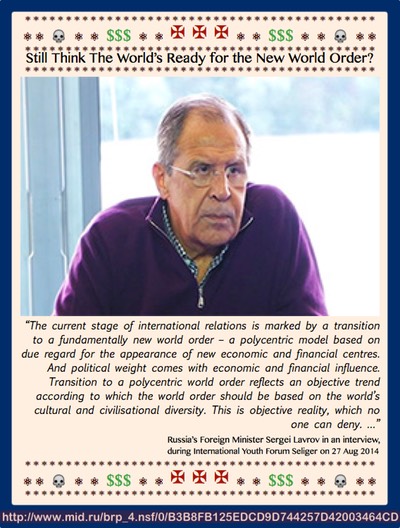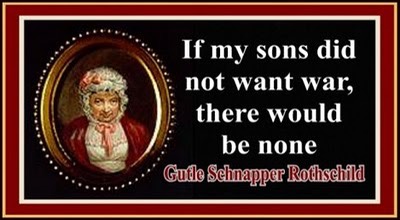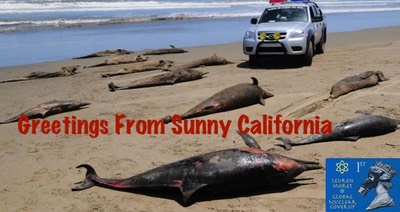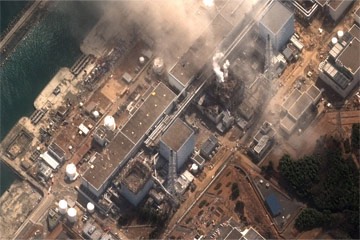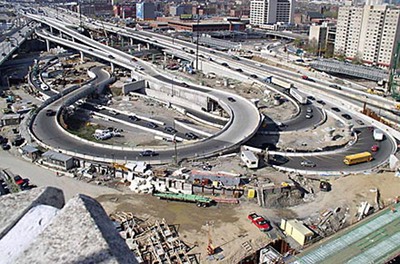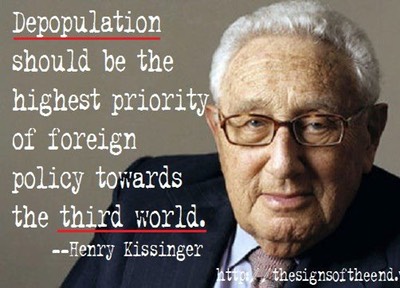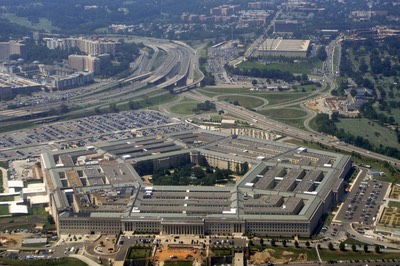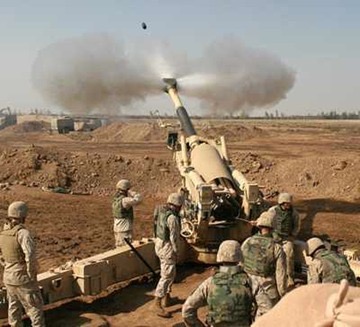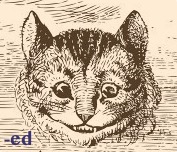Gorbachev Created the Artificial Shortage of Food: Conditions for the Murder of the USSR
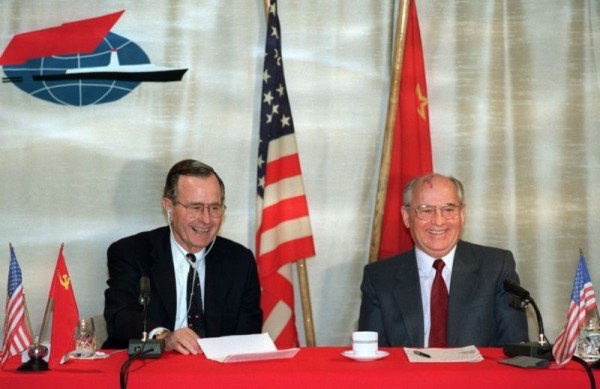
Translated by Ollie Richardson for Fort Russ | 31st March, 2016 | Rusmi
This article, released by, “Rumsi,” on the 27th of March, 2016, tells of what occurred as the Soviet Union was ended in the 1980’s and 90’s. (-ed)
The Perestroika in the country was purposely designed so that the products were issued with coupons.
Food is the most important strategic resource. The safety and defence of the country depended on it like they depended on the presence of nuclear weapons. But today, televised debates discuss one thing: will there be war or not and who will attack us — Europe or the US? Gentlemen, yes we have long been attacked! But we do not hear a word about the situation on the home front today — import substitution in agriculture and food. And this is no accident.
Domestic products now account for 55% of the population's food purchases. Pre-Gorbachev, in the Soviet Union this figure was more than 95%. Food security is considered to be guaranteed at 80%. If the figure is below 50%, then the enemy can take out a country with their bare hands.
Yes, in Soviet times, fertile green peas, sausage or cheese in the regions was not sufficient, and even for meat that was available even at students prices it was necessary to stand in queues. But to buy it in the market or to get it from under the counter would cost double-triple the price. Except for pineapples and bananas and other fruits from overseas.
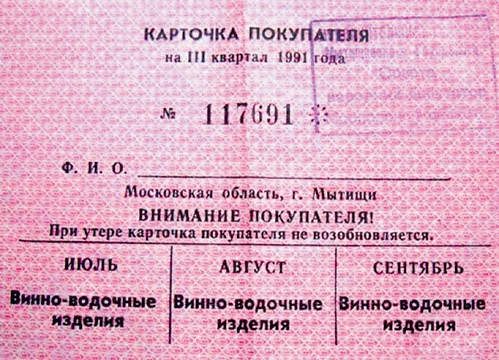
Even in 1987, food production grew faster than population growth and wages. The increase in production when compared to 1980 in the meat industry amounted to 135%, in cheese — 131%, in fish — 132%, milling — 123%. The average salary had increased by 19%.
All the enterprises of the food industry were working at full capacity and without interruption. But at the end of 1988, even in Moscow, where the inhabitants of nearby towns and seconded people took out what they could "procure", the coupons appeared. Soon, buying something already had become almost impossible. For days people stood in queues, every three hours arranging a roll call. Barely anyone didn't fight, wondering where everything had gone, right down to tobacco?
Only one conclusion can be drawn: the deficit was created artificially, and not in the production stage, but in the sphere of distribution. And the best proof of this: 1st January 1992, Gaidar's "shock therapy" began, and on January 2nd, the grocery store shelves were already full. Products became more expensive by the day, sometimes by more than 30%.
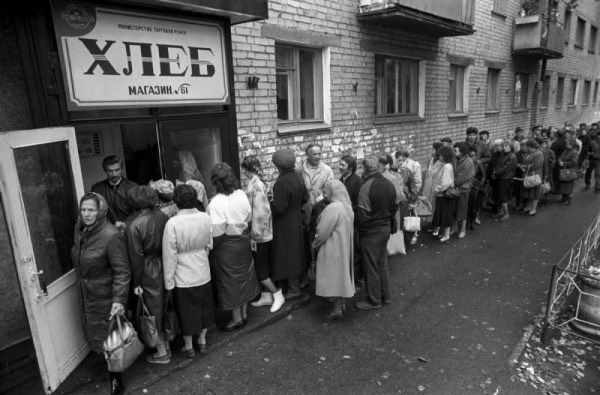
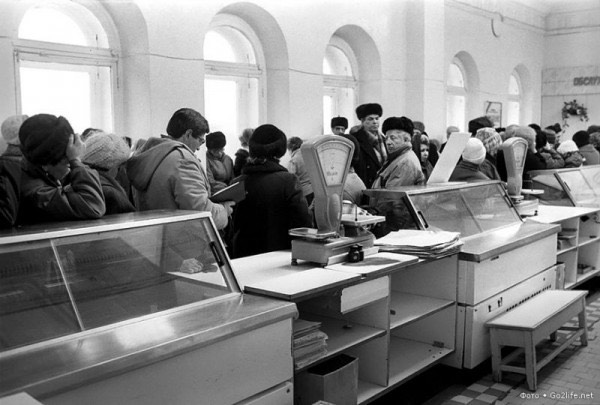
Food Scam
There is a document: a speech by future first mayor of Moscow Gavriil Popov in the Inter-Regional Deputy group, where he said that it is neccessary to create a food situation so that the products were issued with coupons — said Yuri Prokofiev, first Secretary of the Moscow City Committee of the Communist party in 1989 — 1991. This aroused the indignation of the workers and their opposition to the Soviet regime.
Yuri Luzhkov, then the "Chief" of Moscow, explained the ongoing disruptions. He said, "we could supply considerably more meat in Moscow to meet the demand, but the frontline unloading refrigerated sections do not allow it. Due to a lack of access roads, the refrigerator does not have time to unload".
Democrat-Popov was disturbed by this nonsense: likewise, through bureaucratic sabotage and provocation, in February 1917, the liberals artificially created disruptions in the supply of Petrograd to overthrow Nicholas II.
Now, in Moscow, committees were established to combat sabotage. Naive enthusiasts went to them with a simple idea: refrigerated sections with frozen meat can directly use the access roads of the Moscow giants factories, like those giant Khrunichev rocket-science factories, where about 80,000 people worked in the metallurgical plant "Sickle and Hammer" and "Moskvich" with a group of 20,000 and others. Trade Committees would've distributed everything and workers would've unloaded it all, but no. In such a scheme, not a single kilogram of meat would get to the dealers. But the workers were unaware: this is the new class of shopkeeper - shadow businesses grew in the Perestroika.
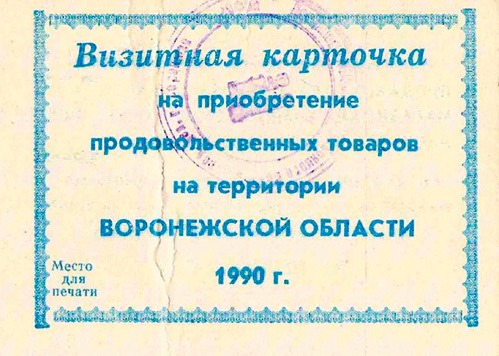
In the TV program "600 seconds" in 1989 -1991, it showed how the trucks from the regions at the entrances to both capitals threw the "coupon" products into the ditches, as they were not allowed in the city.
— Trucks with meat and butter came. There are guys to unload, as always, students. When they arrived, they are told:
- "Take the money and leave pronto, no one must see you here",
- remembers Nikolai Ryzhkov, Chairman of Council of Ministers of the USSR in 1985 — 1990. He was the first to declassify, as Boris Yeltsin was bursting for sole power, how his rival Gorbachev one day stopped 26 tobacco factories "for repairs" of the 28 available! So cigarettes disappeared from the country.

"The government's decisions on the procurement of imported goods dumped the gold reserves of the Soviet Union," said Mikhail Poltoranin, the former Minister of Press and ardent supporter of Yeltsin, who became Chairman of his government. "Gold was flowing abroad, and under the guise of "foreign", they were often categorized as "native". For example, in the ports of Leningrad, Riga or Tallinn, ships loaded with cheap feed grain sailed on the sea to Greece and Spain and came to Odessa with "imported" food wheat at $120 per ton.
Dealers operated openly. People began to leave the square, demanding to stop the looting of the country. This reaction was sought by the Democrats from all the restructuring.
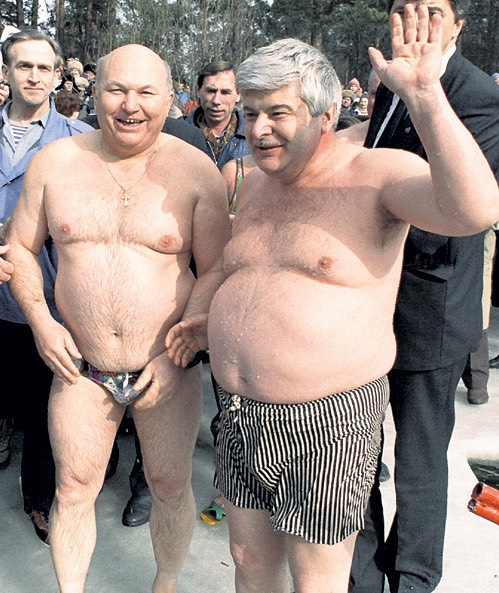
How disorganized was the economy?
- January 1st, 1987 - the day of the conception of party-nomenclature of business. Earlier the monopoly rights of the State Committee Ministry of Foreign Trade and Economic Relations on export-import operations immediately get 20 ministries and 70 large enterprises. Their guidance and performers were fed by the state.
- January 28th, 1987 - the creation of the "Komsomol economy" begins. Across the country, under the aegis of the Komsomol Central Committee, the Centers of scientific and technical creativity of youth (NTTM) are formed. Its aim is to introduce new technologies into all spheres of the national economy. It was a goldmine for profit. Less than six months later, the law on state enterprises (Association) authorized the procedure, for which before would have been executed: the conversion of non-cash money into cash. The exclusive right to cashing was given to the Center of scientific-technical creativity of youth. For the future enrichment of the two groups of future business elite: the leadership of state-owned enterprises and the creative centers.
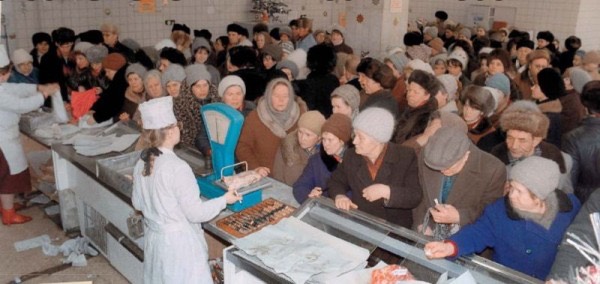
The service took from 18%-33%, 5% deducted to the coordinating Council of the city party Committee. In its work, "the Komsomol" involved relatives and acquaintances arranging bogus welfare centres, taking into account the "interests" of Directors. So began the development of corruption schemes. "Menatep", headed by Mikhail Khodorkovsky, led the Center of scientific-technical creativity of youth. Its members were Leonid Nevzlin, unsinkable from the Yeltsin era, Vladislav Surkov, who is now assistant to the President of the Russian Federation. Competitors — Vladimir Preobrazhensky, future Vice-President of Inkombank and "VimpelCom", "Wimm-bill-Dann food Products", Sergey Lisovskiy, who became famous for the "case about the box from under the Xerox" with $538,000 in cash. Many owners of mass media and landowners.
- May 26th, 1988 the law "on cooperation in the USSR" gave the opportunity for the deputies on the ground to establish cooperatives and joint ventures with foreign companies. Mainly for the exportation of goods abroad for the purpose of accumulating currency. There are the first shadow businesses devoted to executives of the parent organizations, the OBKhSS, the KGB, and other security agencies associated with the criminal world. But with countries of the CMEA (Council for Mutual Economic Assistance), and the Soviet Union, Poland, Czechoslovakia, Hungary, Romania, Bulgaria, the GDR, Mongolia, Vietnam, Albania, and Cuba, international settlements were conducted in transferable rubles. The cost of one was 0,987412 grams of pure gold. It was kind of the first virtual solid supranational currency in the world, not subject to cashing.
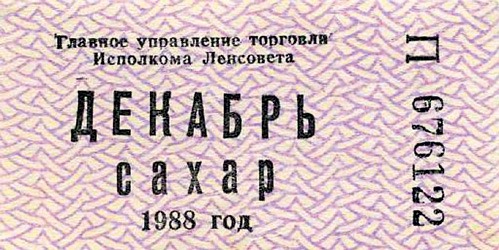
- In 1990, Gorbachev and Ryzhkov forced the CMEA to make a decision about trade conducted only in dollars. The CMEA has no dollars. They were all "bailed-out"by the IMF and the World Bank. By creating demand for US money, Gorbachev deprived their home country markets and planned revenues, and gave the US control over the entire zone of influence of the USSR. This affected the food market. The newly-born bourgeoisie started to remove everything from butter, fish, meat, cereals, condensed milk, sugar, and dried fruit from our warehouses. And not only CMEA countries - for example, in exchange for currency and business trips, the meat from Bashkiria was sent by echelons not only to Germany, but also to Great Britain, as well as in Africa and India.
- 26th December 1991 - the USSR ceased to exist. And in the morning, the law "On urgent measures on implementing land reform in RSFSR" came to power. The compulsory mass accelerated decollectivization and planting in the village of criminal and oligarchical capitalism began.
Foreign land
Regarding how Boris Yeltsin finished off agriculture and eliminated the country's food security, we are told in the material "Yeltsin betrayed his homeland and his people".
Add one only fact: according to expert estimates, foreigners using nominees in the 2013 year bought nearly 3 million hectares of the best farmland in our country. The far East has long hosted Chinese students, and in the rest of Russia, approximately one million hectares of arable land are controlled or owned by the Europeans and Kazakhs. Although the official purchase and sale of arable land is an outrageous crime.
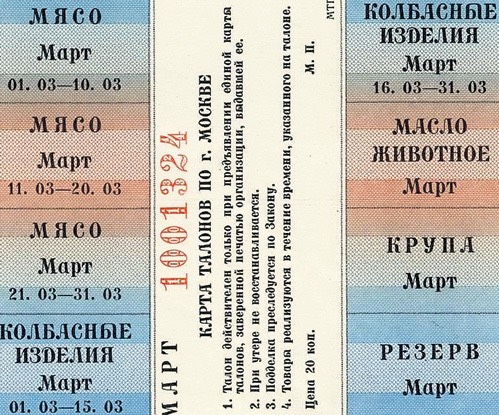
With the coming to power of Putin, subsidies in agriculture increased slightly. At a meeting on agricultural policy on 19th May 2008, the head of state said that Russia needs to become a major player on the world food market. And to defend themselves against sharp fluctuations in food prices. But things are right where they started.
The total debt of agriculture is more than two trillion rubles. Even if its forgiven, without direct investment, supplies of tractors and other expensive machinery of the Russian farmers, according to the Director of the Non-public joint-stock company "State Farm of Lenin" Pavel Grudinina, cannot cope with the task of import substitution in the food sector. For at 25% interest on loans, only a madman would dare to carry out the sowing campaign on borrowed money.
In 2015, the Ministry of Agriculture admitted that the farmers en masse refused loans, but at the end of February they were issued 33% less money than in the past to conduct seasonal work; to buy mineral fertilizers, seeds, means of plant protection, and other components of the sowing campaign. But the government has no program relationship with the farmers. The state does not support farmers, but only banks. In the state program for rural development until 2020, it is recorded that we still need to ensure that wages in the agricultural sector accounted for as much as half of the salaries in the industry. Who among the young will go to the village to work hard for the money? The question is rhetorical.

Revealing figures
- In 1990, at the expense of the government reserves, 50% of the food needs of the population of the subsidized regions of the country were covered. Expenditure of a year's supply compares with four years of the great Patriotic war. This measure prevented a social explosion. At the moment, the state reserves can provide for each inhabitant of the country for the next three months.
- In 1992, Russia was officially categorized as a half-starved country. An average person in our country, "ate" only 2040 calories per day. With reasonable medicine — 2600 calories. According to the World Food Organization, an intake of 2150 kilo calories means constant malnutrition. In the USSR, the level of per capita consumption amounted to 2590 calories, in the US — 3350.
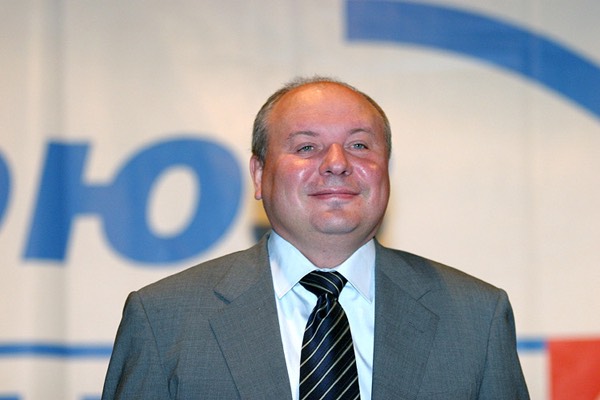
- Yegor Gaidar was very proud of the fact that since 1992 everything was on the counters. In this case, by 1999, the consumption of meat and meat products declined compared with the "hungry" 1990 to 44%, milk and dairy products by 47%, and fish by 51%. The result is a sick generation of children whose childhood fell on the years of reforms.
SOURCE:
http://www.fort-russ.com/2016/03/gorbachev-created-artificial-shortage.html
Visitors to LM:GNC
Leuren Moret: Global Nuclear Coverup
- ❁ Currents
- ⚛ Radiation Omnicide 👥
- 🎥 UC, Davis, Katehi, Illuminati ✠
- 🌎✟☦ One World Religion 🎭
- ♞ Atlanticists v. Putin et al ⚪️
- ✈️ 3 NWO False Flags Connected ➷
- 🔪Ukrainian ✠ Wikileaks 👀 Interview 🎥
- 🚫 Out of Eurasia 🚫
- 💀 Jade Helm, International Implications, NWO Rollouts ⏰
- 🌿 Essential Oils, Nutrition, Frequencies & Health 🌺
- 🎯 R.F.D.E. | H.A.A.R.P. | N.L.P. ⚡️
- ⚛ Leuren Moret: Hiroshima, Nagasaki, Fukushima ⚛
- ❦ Moret & Battis: Jade Helm ❦
- 🌎 New World Order America 🇺🇸
- ⨳ Geopolitics Ukraine | E.U. Judo 🌍
- 👥 Template: Jade Helm
- ✠ America’s Domestic Pacification ✠
- ♨️ Chernobyl, Zaporozhye, Blackmail ⚛
- 💉 REBRANDING DISASTER🔪
- 👤 Eurasian Enigma Arises
- 🔴 Donetsk Nuclear Explosion ⚫️
- 🌍 21st Century Silk Road 🌏
- 🌍 Africa ☗
- ♞ Balkans, The Nameless Triangle
- 🌏 China 🌝
- 🌍 Eurasia 🔴
- 💣 Israel: Out of Erupt!
- ✠ Jesuits/Templar’s Origins & Aims
- 👺 SOROS ✠ NWO 📚 Hacked ✍
- ➴ Pyatt’s ✠ SOROS ♞ Breakfast 🍳
- Breedlove, GOOD RIDDANCE
- 🎱 Obama’s $3 Billion Eurocon 💸
- 🌍 A Psychopath’s Psychopath ✠
- 🔫 Global Hit Squad 💣
- 💀 Neo-Capitalist’s Slave Trade 💰
- 🇺🇸 Bio: Undermine Control
- ↷ Fine Evening For A Minuet ↶
- ✠ Slavery, Then & Now
- 💣 JCS Operation Northwoods
- ✠ The Three Secret Meetings
- Korea Yeonhee (연희) Nuclear Kabuki Theatre
- 🌍 Middle East 💣
- 💣 ISIL: Battered, Retreating 💀
- 🔥 Turkish Coup Attempt 💣
- ⚑ Muslim Brotherhood and ISIS ⚫️
- 🔫💰💉Daesh Terrorist Multi-Tool🔪💣💊
- 🚧 US and Turkey, NWO the Kurds 💸
- ✠ Hitler Bragged on Jesuits ✠
- 🍞 Their Daily Bread & Rubble 💣
- 🔪“Erdogan is Strengthening ISIS”💣
- 🇫🇷 Russia Reveals ISIS’ Money 💰💰
- "Raqqa's Rockefellers” ISIS Full Frontal
- ☞ Smashing Turkey’s Game❌
- 🌍 Juncker | E.U. | Direction ⤣
- 🔪 GLADIO Wolf Kills Russian Pilot ✈︎
- ✈︎ Washington’s SU-24 🎯
- 🌐 Turkey, NATO, War Crime? 🔎
- ➷ 449-Down, ISIL to Go 💣
- 🌎 North America 🔥✠
- 🇷🇺 Russia 🇷🇺
- 🇷🇺 PUTIN OVERHAULS KREMLIN 🏰
- ☛ Who Created ISIS ☚
- 🍳 Food Supply Compromised 🎱
- 🌍 Putin re Ceasefire Syria 🌐
- 👤 Cold War Re-Run 👀
- 🌐 Minsk 101 | Theatre of the Absurd 🌍
- 🌐 Geopolitical Original Sin 🌍
- ♘ Russian Troops | Turkish Border ♘
- 📚 Educating Charlie Rose 🔑
- 🌍 Lavrov's Munich Speech
- 🎱 US Embassy Media Fail 🎭
- ✠ ♛🃏 Putin’s Jar Of Spiders
- 🎱 MOSSAD’S ON THE DOORSTEP 💣
- 📄 This Document is Dynamite 📄
- ♔ The Golden Trap
- ❁ Russian Fusion-Fission
- ❁ Putin’s 7-Point Plan
- ❁ Russian Position Speech
- ✈︎ Ukraine, MH-17, Jesuits Flagged! BRICS Undermined?
- ⏰ Ukraine? 🔥 Bail Out! ✈️
- 💦👤 Psychotropic Zombification ☔️
- 💣 Odessa Trade Union Murders 🔥
- 🃏 Nothing Personal, Just Business 💰
- 💉 BioWeapons for Depopulation 💀
- ⚛ Nuclear Coverup Ukraine | Mines of Zholti Vody 💀
- 🔥 Unsustainable Ukraine 👥
- ☗ ASHES TO ASHES 💀
- 🔪Ukrainian Wikileaks 👀
- ☞ Dispatches From the Front 🔫
- 💣 The Ukrainian Failed State 🌍
- 🔑 Our Decisions Define Us🔑
- ✠ Child Abuse 💀
- 💣 Mozgovoi’s Murder 🔪
- 🎱 Yatsenyuk's Russian Threat 🔮
- ||| Prison Ukraine |||
- ✍ CyberBerkut Reports 👥
- ♨️ Crazy Arseniy’s -USED- Ukraine Fire Sale! ♨️
- ✝ AZOV CRUCIFIXION ✝
- 👤 Eyewitness Debaltsevo Cauldron 💀
- ✍ Historic Slaviansk Doctor Interviewed
- 💀 The Tragedy of Uglegorsk
- ♟ Jan. 2015 Minsk Fail 🃏
- ➷ Tochka Found, Debaltsevo Locked
- 🌍 World Facing Second Chernobyl
- ✈︎ MH-17 AND THE Jesuit Minuet
- ✈︎ MH-17, Jesuits Flagged!, Video
- 💀 Death’s Drummers
- 👤 DPR! Novorossiya Calling
- 💀 Ukraine’s Chernobyl Armor
- 🎱 Gas to Ukraine Blocked
- ❁ Global Nuclear Theatre: Donbass
- ✠ GHOSTS of the 51st BRIGADE
- ❁ Novorossiya: Strelkov Briefing
- 👤 Open Letter to President Putin
- ✈︎ MH-17 Dutch Interim Report
- 💣 Surrendering UA Murdered by Punatives
- ♟ Mutiny of the Euro-Integrators ♟
- ➹ View from Ukraine Operating Room
- ❁ Ukraine’s Violent Escalation
- ❁ Ukrainian Soldier’s Cry for Help
- ⧱ Occupied Ukraine ⧱
- ❁ US State's Nuland Directs Ukrainian Coup
- 📯 Ukraine Deputies Knew Before Maidan
- ❁ Health In 2015
- 💉 Vaccines 💀
- 🎥 Geopolitics, Jesuits & History
- 🎥 Rebranded ✠ The Jesuits ✠
- ⚛ Zaporhyze Nuclear Events & Geopolitics
- ❁ Fukushima Polar Vortex Radiation ❁
- 💀 Embrace, Enfold, Extinguish
- ✈︎ Fear of Flying . . . (1of4)
- ❁ Fukushima: Impact of Fallout On Oceans (Pt.1)
- ❁ Fukushima: Impact of Fallout On Oceans (Pt. 2)
- ❁ North America, Middle East and Fukushima
- ❁ DHS/Napolitano Berkeley Template
- ❁ Fukushima Radiation, Ecocide & Tesla Technology
- ✈︎ Flight 370 Downing
- ✈︎ MH370: The Follow-Up
- ❁ Domestic Radiation Issues
- ❁ Fukushima: Hawaii, Pacific Is. - Unsafe
- ⚛ Fukushima Reactors, Breakdown 1-6 ⚛
- 🌏 International Sites Featuring LM:GNC
- ❁ On To Mongolia 🎥
- 🎥 LKM On Fairdinkum Media 🎥
- ❁ Editorial Page
- ❁ Conversations 📬
- ❁ Waves
- ⚛ Radiation Around The Nation 🌎
- ⚛ Your Radiation #73/74, Sep 10 - 24, 2016 🌎
- ⚛ Your Radiation #71/72, Aug 27 - Sep 10, 2016 🌎
- ⚛ Your Radiation #69/70, July 30 - August 13, 2016 🌎
- ⚛ Your Radiation #67/8,--July 16-30, 2016 🌎
- ⚛ Your Radiation #65-6,--July 2-16, 2016 🌎
- ⚛ Your Radiation #64, July 2-9, 2016 🌎
- ⚛ Your Radiation #62-3, June 18 - July 2, 2016 🌎
- ⚛ Your Radiation #61, June 11-18, 2016 🌎
- ⚛ Your Radiation #60, June 4-11, 2016 🌎
- ⚛ Your Radiation #59, May 28 - June 4, 2016 🌎
- ⚛ Your Radiation #58, May 21-28, 2016 🌎
- ⚛ Your Radiation #57, May 14-21, 2016 🌎
- ⚛ Your Radiation #56, May 7-14, 2016 🌎
- ⚛ Your Radiation #55, Apr 30 - May 7, 2016 🌎
- ⚛ Your Radiation #54, Apr 23-30, 2016 🌎
- ⚛ Your Radiation #53, Apr 16-23, 2016 🌎
- ⚛ Your Radiation #52, Apr 9-16, 2016 🌎
- ⚛ Your Radiation #51, Apr 2-9, 2016 🌎
- ⚛ Your Radiation #47-50, Mar 5 - Apr 2, 2016 🌎
- ⚛ Your Radiation #46, Feb 27-Mar 5, 2016 🌎
- ⚛ Your Radiation #45, Feb 20-27, 2016 🌎
- ⚛ Your Radiation #44, Feb 13-20, 2016 🌎
- ⚛ Your Radiation #43, Feb 6-13, 2016 🌎
- ⚛ Your Radiation #42, Jan 30 - Feb 6, 2016 🌎
- ⚛ Your Radiation #41, Jan 23-30, 2016 🌎
- ⚛ Your Radiation #40, Jan 16-23, 2016 🌎
- ⚛ Your Radiation #39, Jan 9-16, 2016 🌎
- ⚛ Your Radiation #38, Jan 2-9, 2016 🌎
- ⚛ Your Radiation #37, Dec 26 - Jan 2, 2015|16 🌎
- ⚛ Your Radiation #36, Dec 19-26, 2015 🌎
- ⚛ Your Radiation #35, Dec 12-19, 2015 🌎
- ⚛ Your Radiation #34, Dec 5-12, 2015 🌎
- ⚛ Your Radiation #33, Nov 28 - Dec 5, 2015 🌎
- ⚛ Your Radiation #32, Nov 21-28, 2015 🌎
- ⚛ Your Radiation #31, Nov 14-21, 2015 🌎
- ⚛ Your Radiation #30, Nov 7-14, 2015 🌎
- ⚛ Your Radiation #29, Oct 31 - Nov 7, 2015 🌎
- ⚛ Your Radiation #28, Oct 24-31, 2015 🌎
- ⚛ Your Radiation #27, Oct 17-24, 2015 🌎
- ⚛ Your Radiation #26, Oct 10-17, 2015 🌎
- ⚛ Your Radiation #25, Oct 3-10, 2015 🌎
- ⚛ Your Radiation #24, Sep 26 - Oct 2, 2015 🌎
- ⚛ Your Radiation #23, Sep 19-26, 2015 🌎
- ⚛ Your Radiation #22, Sep 12-19, 2015 🌎
- ⚛ Your Radiation #21, Sep 5-12, 2015 🌎
- ⚛ Your Radiation #20, Aug 29 -Sep 5, 2015 🌎
- ⚛ Your Radiation #19, Aug 22-29, 2015 🌎
- ⚛ Your Radiation #18, Aug 15-22, 2015 🌎
- ⚛ Your Radiation #17, Aug 8-15, 2015 🌎
- ⚛ Your Radiation, August 1-8, 2015 🌎
- ⚛ Your Radiation, July 24-31, 2015 🌎
- ⚛ Your Radiation, June 26 - July 24, 2015 🌎
- ⚛ Your Radiation, June 19-26, 2015 🌎
- ⚛ Your Radiation, June 12-19, 2015 🌏
- ⚛ Your Radiation, June 5-12, 2015 🌎
- ⚛ Your Radiation, May 29 - June 5, 2015 🌎
- ⚛ Your Radiation, May 22-29, 2015 🌎
- ⚛ Your Radiation, May 15-22, 2015 🌎
- ⚛ Your Radiation, May 8-15, 2015 🌎
- ⚛ Your Radiation, May 2-8, 2015 🌎
- ⚛ Your Radiation, April 24 - May 1, 2015 🌎
- ⚛ Your Radiation, April 17-24, 2015 🌎
- ⚛ Your Radiation, April 9-16, 2015 🌎
- 🔥 Fire at Oak Ridge 💥
- 💥 NANOWEAPONRY 💥
- 🐄 Radioactive Cattle Teeth, Fukushima 🏭
- 📰 WikiLeaks 🔎 NSA and More 🔦
- ✨Nano ‘Hall of Mirrors’⚡️
- ⚛ 💀 ⚛ into the Hudson River 🌎
- 🚿 Flint, Metropolitan Eugenics 💀
- 🌍 Existential Threat? ☛NATO☚
- 💉 Gates, Poroshenko; Conspiracy, Government 🎯
- 💉 Gates-Poroshenko ZPG Ukraine 💀
- 💀 Paris Massacre Perpetrators 👤
- 🔪 Delgado, Mind Control ♟
- 🌎 MOST NUKED NATION ON EARTH 🌎
- 🎯 Radio Frequency Directed Energy 🎯
- ⚛ Please, Don’t Pick the Mutants 🌻
- ⨳👤⨳ Space-Based Weapons Ban
- √ Saudi OP Strategy Success
- ♨️ Gallery ♨️ Chernobyl Fire ♨️ 2015 ♨️
- 🌍 Monsanto Backdoors E.U.
- 🎉 Crimea’s 1st Anniversary Album 🎉
- 🌏 21st Century Eschalon
- 📰 International Headline Watch 🌏
- ✄ Prouty Place ✑ CUT THE BULL ✂︎
- 🌏 How To Wreck The Environment
- 🇯🇵 Plutonium Isotopes Off Japan
- 🌍 Depopulation Agenda: Europe 👤
- 🔪💉Cease Covert Depopulation Letter🔪💉
- ❁ Dutch Apologize for MH-17 Lies
- ❁ Pacific Dead from Fukushima
- ❁ Strange Fish Story
- ❁ Blood Composition of Monkeys Altered Near Fukushima
- ❁ Secret Army Bases
- ⚛ Fukushima Plutonium Effect ⚛
- ➷ RAND Demographic Military Power ➷
- ⚛ Depleted Uranium | DNA Damage ⚛
- ❁ Hidden Genocide: by Dr. Ernest Sternglass
- ❁ Space Preservation Act of 2001
- ❁ 1972 Rothschild Ball
- ❁ Unsafe Radwaste Disposal
- ♆ Fallout and Reproduction of Ocean Fish Populations
- ⚛ Radiation Around The Nation 🌎
- ❁ Lifestyle
- ❁ Archive
- ⚛ 61 Years of Omnicide ⚛
- 📻 Nanoparticle Toxicity with Leuren Moret ❦
- ❁ New Bombs and War Crimes in Fallujah
- ❁ Global Climate Change . . .
- ⚛ International Radiation Distribution ⚛
- 💀 Depleted Uranium’n’DNA 😱
- ❁ UC Regents Lose Nuke Pgm
- ❁ DU-Trojan Horse
- ❁ LM:GNC (Pt1)
- ❁ LM:GNC (Pt2)
- ❁ World Uranium Weapons Conference 2003
- ⚛ Radionuclide ReMobilization Abatement
- ❁ "America First" Transcription
- ❁ "Whale Archive" Transcription
- ⚛ ⚛ ⚛ Location, Leuren Moret: Global Nuclear Coverup ⚛ ⚛ ⚛
- ❁ Glossary
- ❁ Contact
🌍 LM:GNC 20160402 🌐
🍳🎱🍳🎱🍳🎱🍳🎱🍳🎱🍳🎱🍳🎱🍳🎱🍳🎱🍳🎱🍳🎱🍳🎱🍳🎱🍳🎱🍳🎱🍳🎱🍳🎱🍳
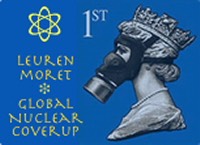
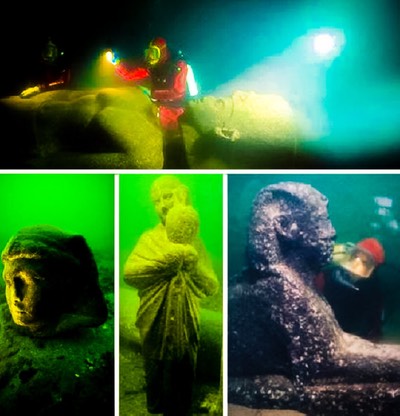
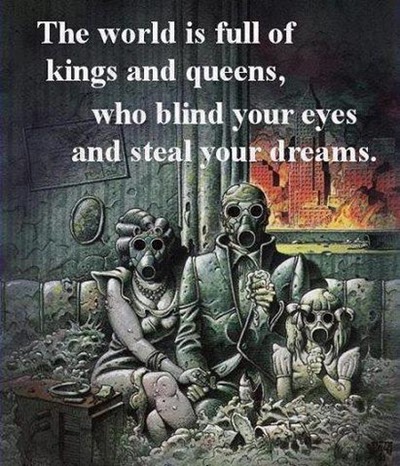
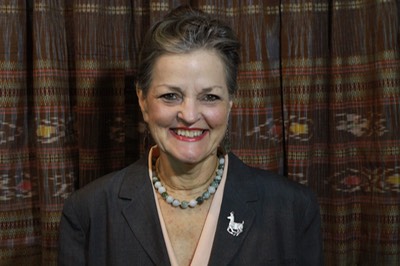

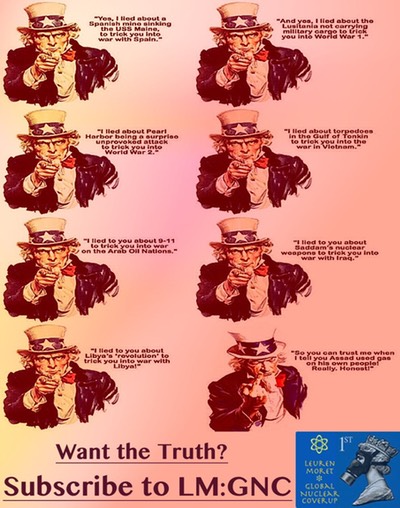
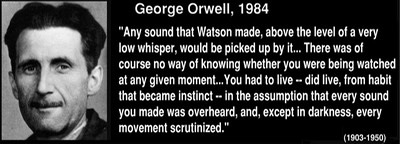
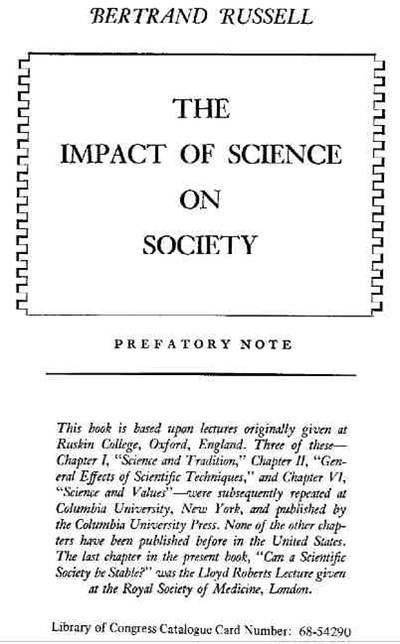
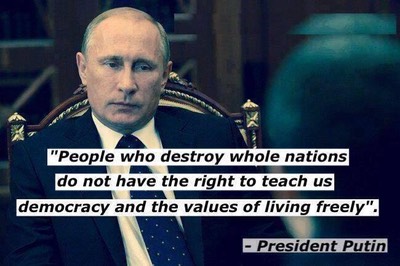
![20120724 - 7-24-2012 The More We Learn - quote from David Rockfeller -_thumb[2]](../../_Media/20120724---7-24-2012-the_med_hr.jpeg)
